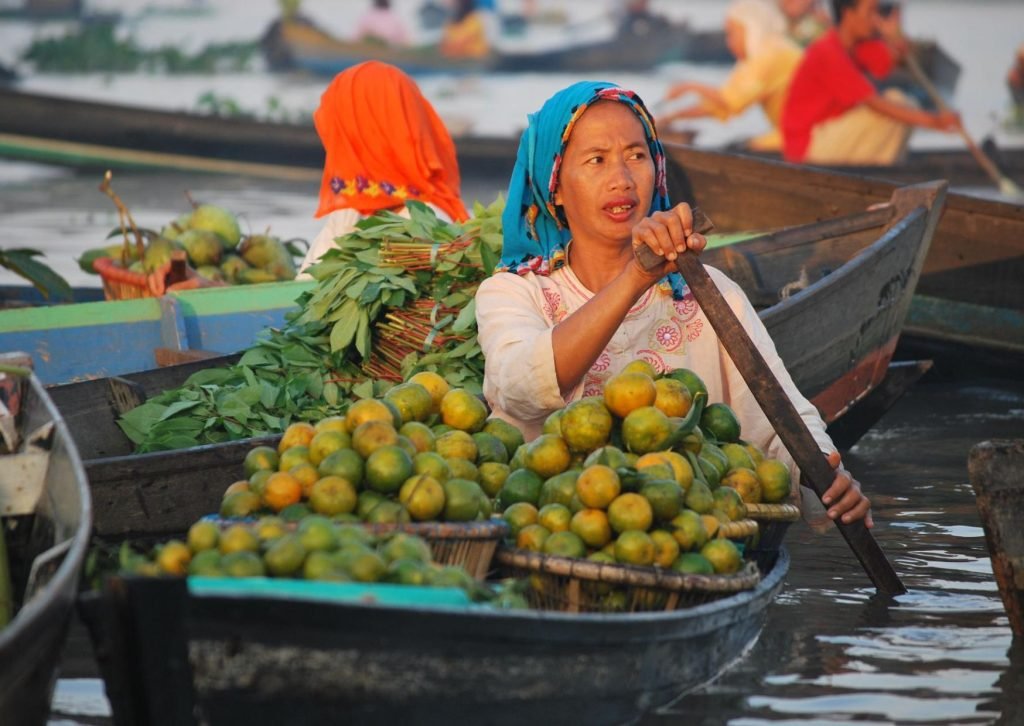Uncategorized
Banjarmasin’s Floating Markets: A Glimpse into Riverfront Traditions
A visit to Banjarmasin is incomplete without experiencing the iconic floating market, a symbol of the city. Known as the “city of a thousand rivers,” Banjarmasin has woven rivers into its way of life for centuries. The Banjar people, the indigenous inhabitants of Banjarmasin, share a deep connection with these waterways, which serve both as vital resources for daily needs and as a means of linking the surrounding communities.
Kalimantan spans an area of 743,330 km². Many villages can be found along the riverbanks. Water transportation, such as the klotok boat, remains a popular choice for traveling between villages or towns. Hence communities on the island are interconnected by rivers. The rivers also play a significant role in the economy of Kalimantan, especially in Banjarmasin.

The Banjar people living along the rivers, particularly the Barito and Martapura rivers, have known the floating market system since the 15th century. This activity has been ongoing for hundreds of years, even before the Kingdom of Banjar was established. The floating market represents an adaptation of the Banjar people’s lifestyle in response to limited infrastructure in the past. Back then, land-based trading was restricted by infrastructure, so rivers were utilized as economic channels.
Banjarmasin is home to three active floating markets: Lok Baintan Floating Market on the Martapura River, Siring Tendean Floating Market in the city center, and Muara Kuin Floating Market on the Barito River. Of these, only Lok Baintan Floating Market still practices the traditional barter system. Known as “bapanduk” in the Banjar language, this system has been in place for generations. Traders at the floating market not only sell their goods for money but also exchange products to meet their daily needs.
The floating markets operate from 6 to 9 AM WITA. Traders offer their goods by approaching buyers, so they don’t stay in one place. They move along the river in small boats called jukung. Buyers can use their own jukung or rent one. The majority of traders in this market are women. When selling, the women traders wear a tanggui, a hat made from rumbia leaves that is a native plant to South Kalimantan. This plant is growing abundantly in swamps.

The market primarily offers essential goods like vegetables and meats, with the produce sourced from the traders’ local gardens. In addition, Banjar artisans sell handicrafts, such as hats and baskets woven from rumbia leaves. Traders and buyers navigate the river, moving from boat to boat to carry out transactions. As boats gather on the water’s surface, buyers can easily hop between them to make their purchases.
The floating market has become an iconic symbol of Banjarmasin, inspiring the annual Floating Market Cultural Festival. This event highlights the unique floating market culture of the Banjar people and offers a range of activities and competitions for the wider community to enjoy.
References:
Mu’in, F. (2019). Penggunaan bahasa di Pasar Terapung Lok Baintan, Kabupaten Banjar, Kalimantan Selatan. Indonesian Journal of Cultural and Community Development, 2, 22-28.
Normelani, E. (2016). River, culture and tourism in Lok Baintan, South Kalimantan. Journal of Indonesian Tourism and Development Studies, 4(2), 57-62.
Sirajudin, S., Triyuwono, I., Subekti, I., & Roekhudin, R. (2019). Revealing trader’s sustainability in the Lok Baintan’s Floating Market, 136, 162-164.


